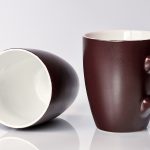A trademark registration application refused as “merely ornamental” simply decorates a product and does not identify its source.
That is, in order for the US Patent and Trademark Office (USPTO) to register a trademark, it must be a “source-identifier.” It must identify you or your company as the source of the product to US consumers.
The reason for this requirement is that trademark law fundamentally exists as a consumer protection mechanism in US law.
Yes, trademark registration does grant your business the exclusive use of its name or logo or slogan in the US. It also allows you to sue infringers in Federal Court. And to request that US Customs block the import of infringing goods. A publicly owned trademark will cause others to re-brand and avoid accidental infringement, furthermore.
There are a host of advantages to registering your business or product name, logo, or slogan as a US trademark.
However, from the standpoint of the US government, these advantages are somewhat beside the point.
What the USPTO wants to know when it reviews your application is:
- Does the name or logo function as a trademark?
- Is the name or logo inherently distinctive?
- If not, has the name or logo acquired distinctiveness through long-term use?
If the mark does not satisfy these inquires, the USPTO may reject the trademark registration application as merely ornamental.
What Is a Merely Ornamental Mark?
A merely ornamental trademark is one that does not function as a trademark.
This circular-sounding statement stabs at that essential “consumer protection” purpose of US trademark law. However, in plain English, it means that the mark fails to specifically identify a source of the product on which it appears.
It’s just decoration.
This is a very common USPTO trademark registration refusal basis for clothing and other wearing apparel. Clothing, jewelry, canvas and other bags, purses, housewares, and other such goods are nearly always decorative.
That is, they are nearly always, to some extent—ornamental.
What is, then, a merely ornamental mark? It is the design that appears only on the front of the t-shirt or the back of the hoodie or side of the handbag. A merely ornamental mark makes the product interesting or pretty—but it is not the brand name or logo.
The brand-name and/or logo of a t-shirt, for example, appears on the hang-tag on the back of the shirt’s collar. If that name or logo is only on the front of the shirt, it may be protected under US copyright law—but not US trademark law.
It is, further, a very common point of refusal for applicants filing trademark registration applications without the assistance of an experienced Michigan trademark attorney.
How Does the USPTO Respond to Merely Ornamental Trademark Applications?
The USPTO, when examining a new trademark registration application, will look for the right answers to the bulleted questions above.
If the mark is merely decorative and is not distinctive enough to identify your business as the source of the t-shirt or other product, it does not “function as a trademark.”
It will be considered merely ornamental.
However, first, the USPTO will examine the following factors:
- Whether the name or logo makes a “commercial” impression in the minds of consumers;
- What the relevant practices of the trade in question are;
- Whether there is any secondary source in the marketplace of the mark’s source identifying quality;
- Whether there is any evidence of the trademark’s distinctiveness.
If the USPTO does not find that these factors outweigh the merely ornamental appearance of the trademark, it will issue an Office Action refusal of the application.
Let’s discuss those factors first, however.
The Commercial Impression of the Trademark
A trademark that is merely ornamental makes no commercial impression.
That is, the USPTO will consider whether the purpose or significance of the proposed trademark is to identify the source of the product—or whether it is to do something else.
Is the purpose of the trademark to identify the manufacturer of the t-shirt? Or is it to make the t-shirt look more eye-catching, or cool?
The USPTO Examiner will review the mark itself for direction here. It will consider the design’s size, placement location on the product, and the dominance of the mark on the product. Does the wording identify the manufacturer of the clothing or other product? Or does it utilize a common phrase or expression, such as “Rock On!” or “Peace & Love,” etcetera?
Is the Mark Merely Ornamental Within Specific Trade Practices?
The USPO will also question whether the name or slogan or design is distinctive within the trade specific to the type of product in question.
The question here will be whether the proposed trademark is unique enough to identify your business as the source of the product—or whether it is a mere refinement of a well-known form of ornamentation for that type of product as it would be perceived by the public.
For example, the USPTO has rejected applications for design marks (logos) that were known by the public to be “the usual” sort of ornamentation or decoration to be found on cooking products.
Is There a Secondary Source of Consumer Recognition?
That said, if consumers would recognize the proposed mark as identifying the applicant as the source of the product in question because it used on other goods pursuant to a prior registered trademark, a trademark alleged to be merely ornamental may pass muster.
In other words, if your trademark registration application is refused as merely ornamental, you can provide evidence to prove that there is another reason why consumers would identify your t-shirt or hoodie as your product when sold in connection with the mark.
That other reason would be other goods and services sold in connection with a prior registration for the same trademark. (Note that different trademark registration applications may be filed for different classes of goods and services launched into the marketplace at different times.)
To overcome a USPTO Office Action on this basis, you would need to show:
- That you own a prior registration for the applied-for mark;
- That the other use of the mark is non-ornamental.
Thus, for example, a certain “swoosh” design is a well-known and registered trademark of an athletic footwear company. That “swoosh” design might also be registered for, say, stickers or posters, even though the “swoosh” printed on those items is arguably merely ornamental.
However, if it can be argued that the “swoosh” design on stickers or posters is actually to indicate the source of the company’s athletic footwear, a new trademark registration application may be approved.
Merely Ornamental Office Actions: Let a Michigan Trademark Attorney Help You
When the USPTO issues a merely ornamental Office Action, you will have 3 months to respond.
Thus, time is of the essence.
The best way to avoid a merely ornamental Office Action is to consult an experienced Metro Detroit trademark attorney before filing the application.
Nearly always, a slogan or design on the front of a t-shirt is going to be genuinely merely ornamental and unregistrable. However, a Michigan trademark attorney can help to guide your clothing or apparel company forward toward a registrable trademark and brand that can be protected for years to come.
Going it alone, without expert legal assistance or a solid understanding of what trademark registration does or doesn’t do is a good way to waste a fair amount of money—and a large amount of time.
Noble Path Trademark Law is a boutique US law practice located in Metro Detroit and assisting entrepreneurs, solopreneurs, artists, musicians, start-ups, and larger enterprises with robust intellectual property portfolios in all industries and in all states with trademark registration, trademark renewal, trademark monitoring, and Office Action refusal response matters.
We offer virtual consultations, premium customer service, and the expertise you need to maximize your odds of trademark registration, Letter of Protest, or Opposition success.






